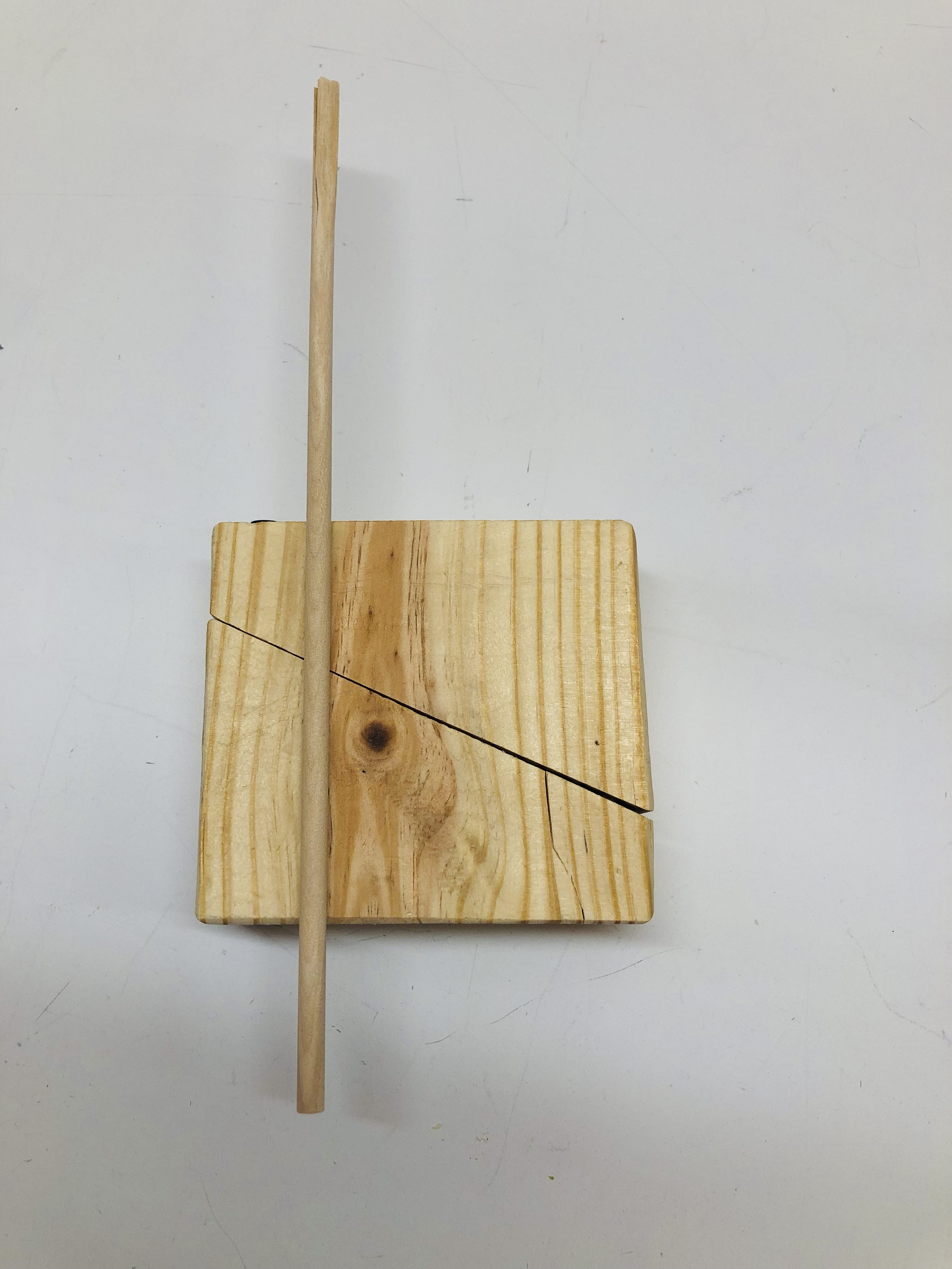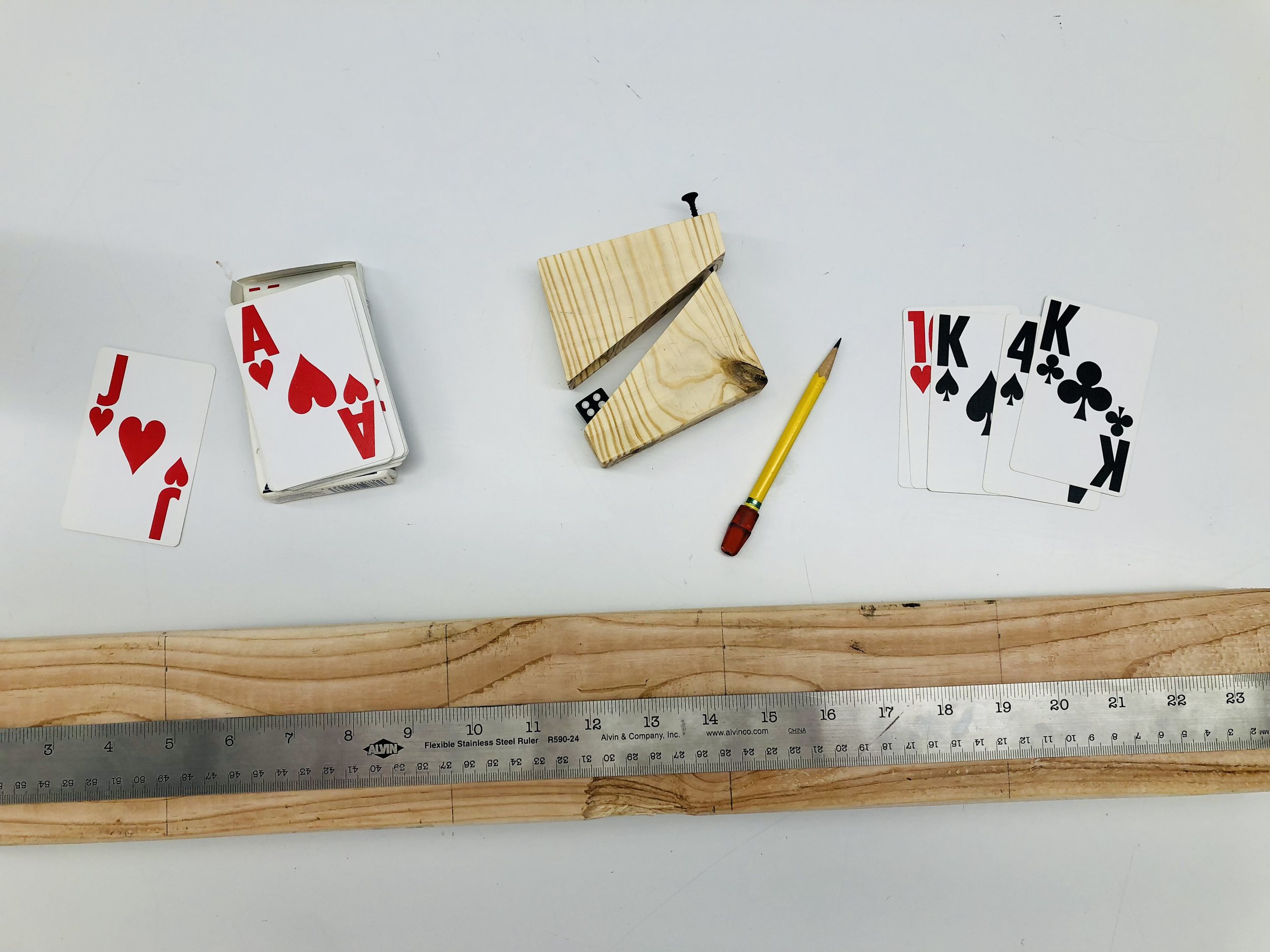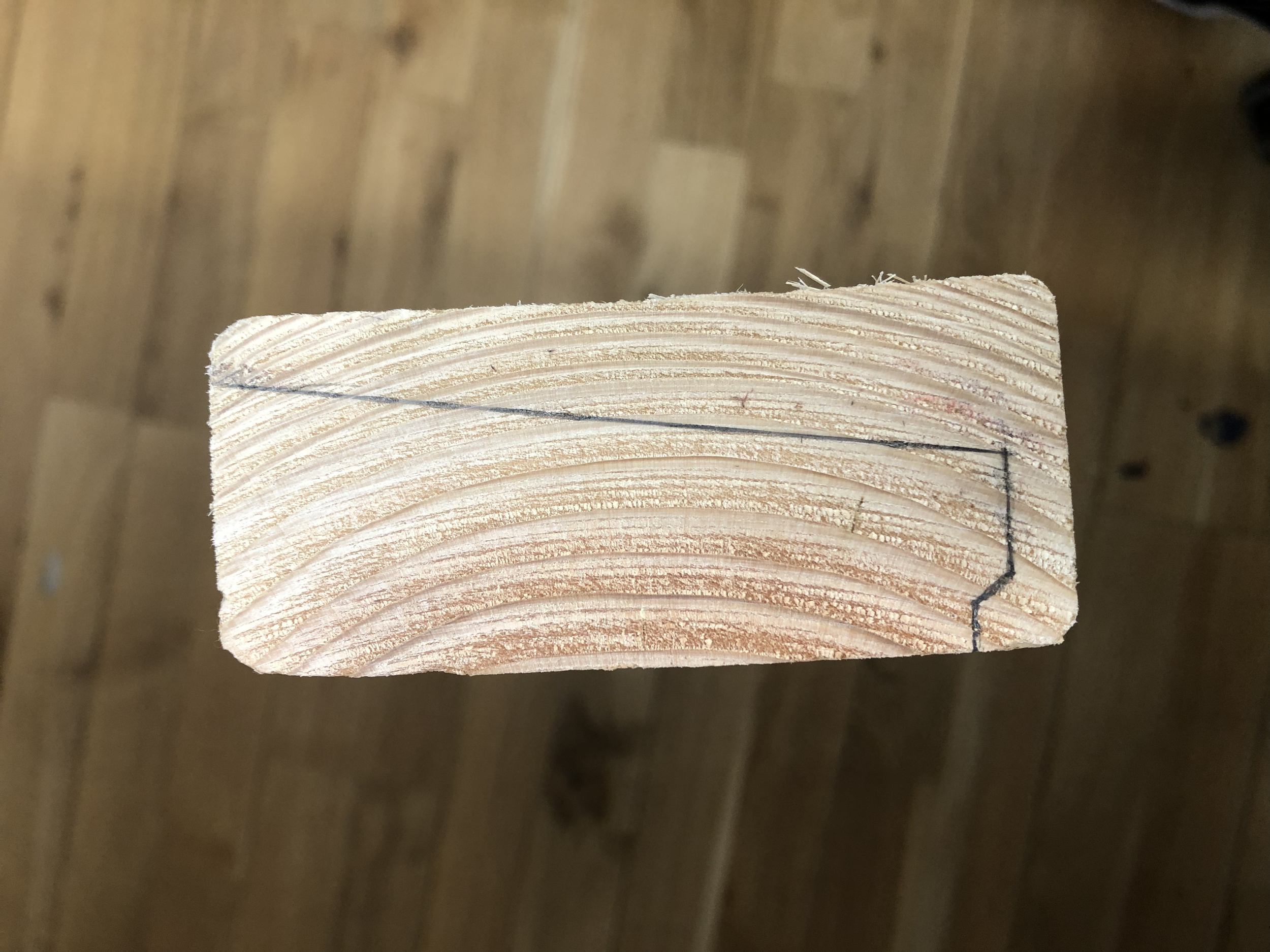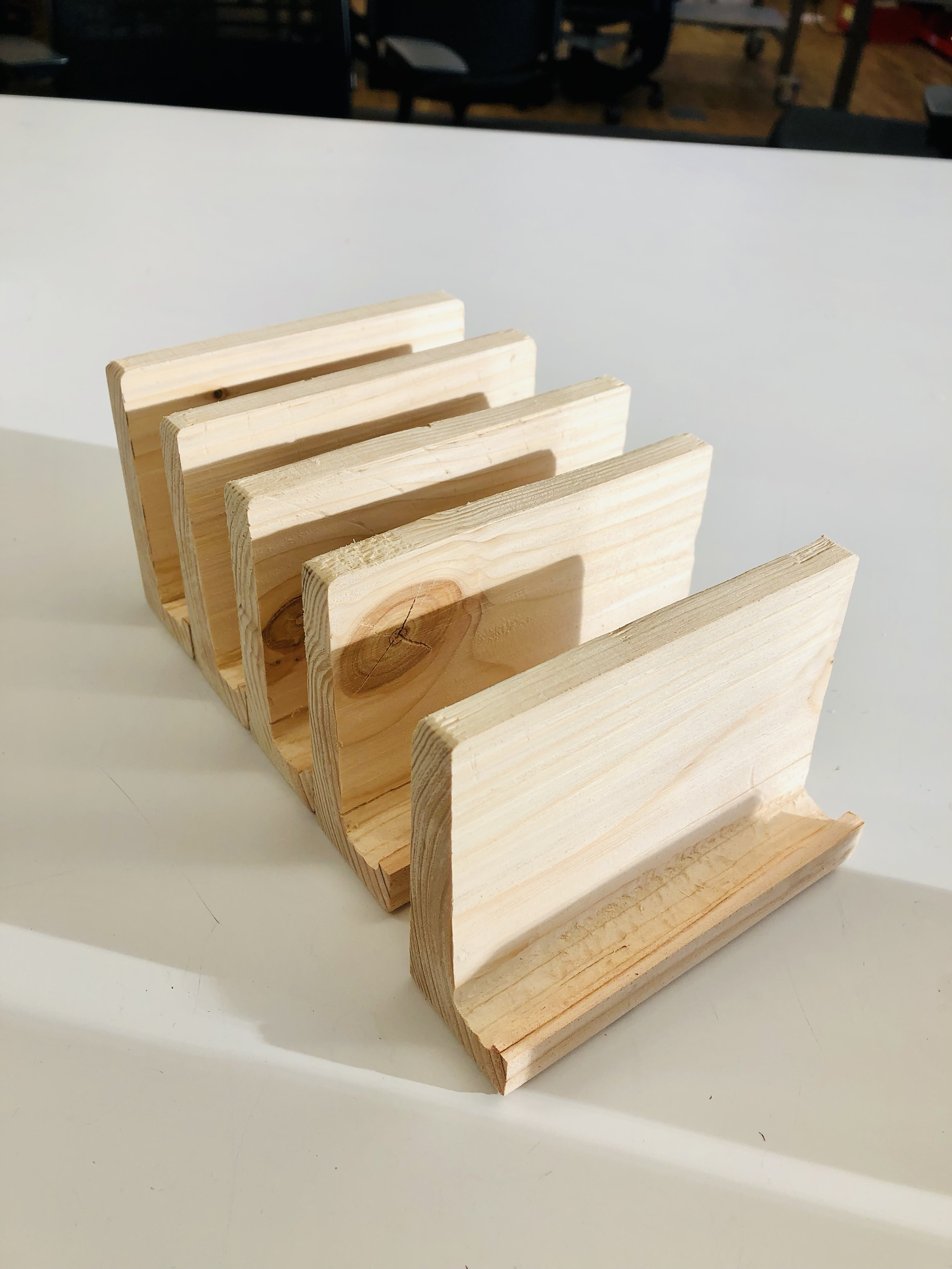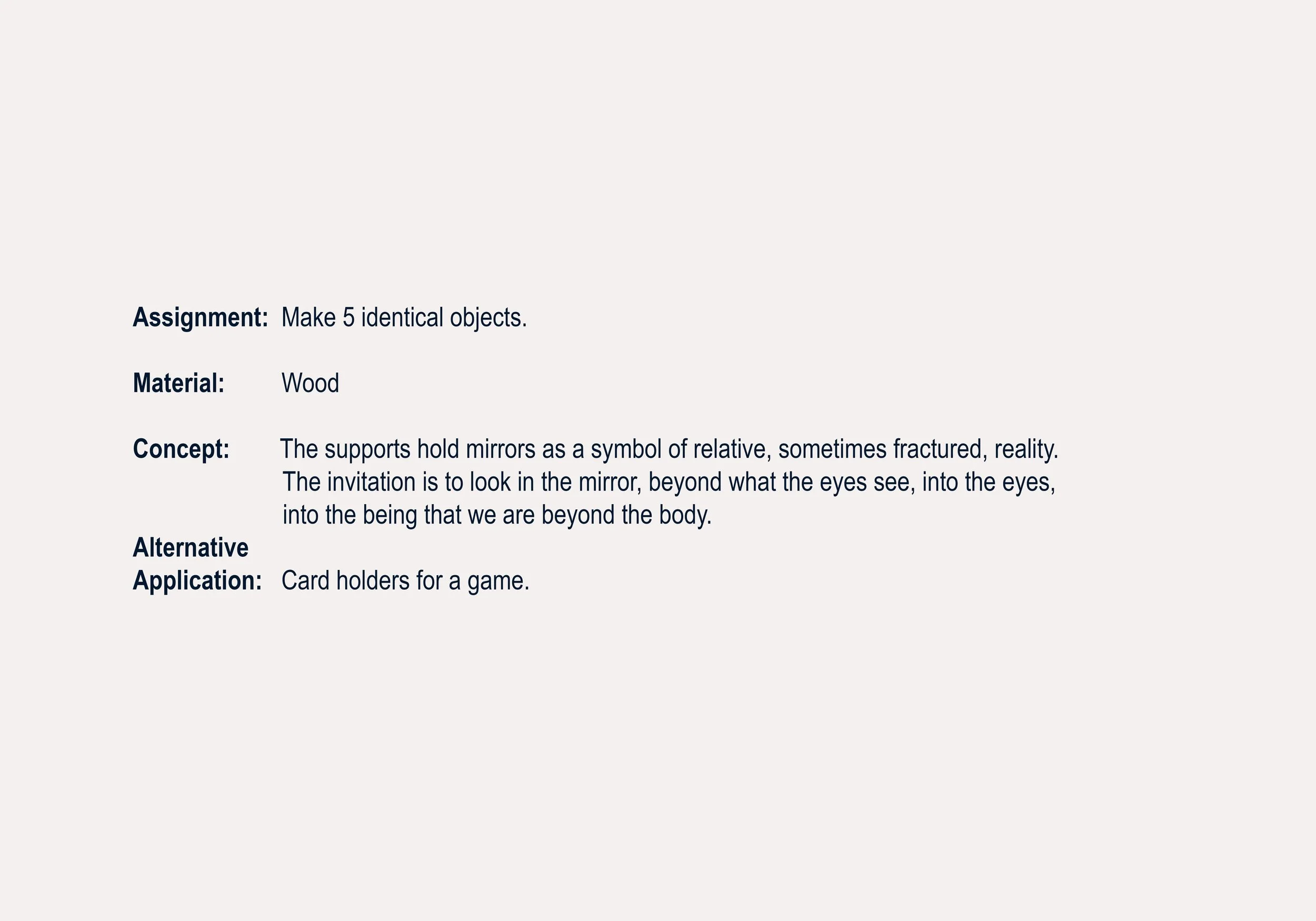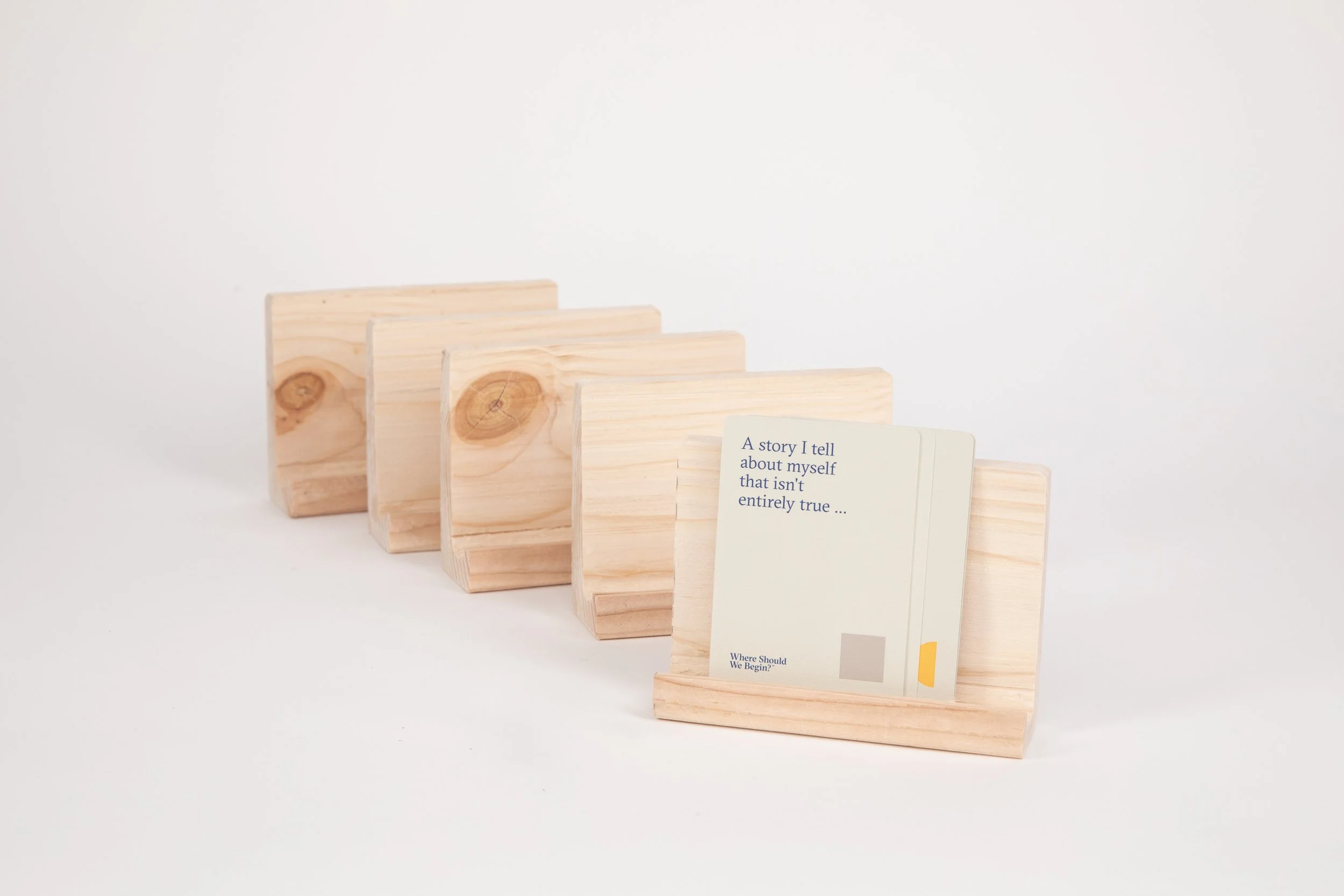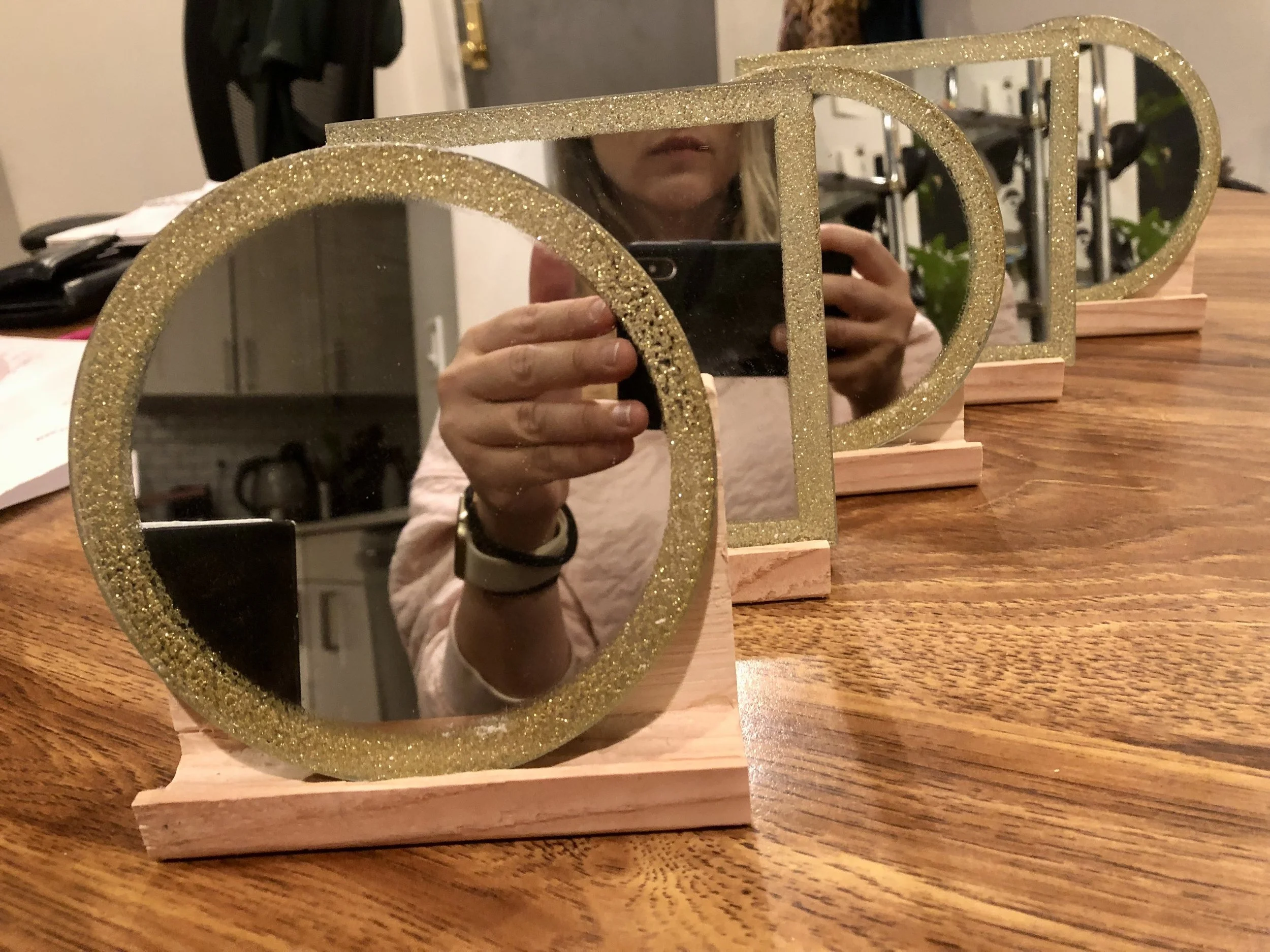IT ISN’T WHAT IT IS
a portfolio of objects displaying fabrication skills
Caption: The dice, a found object, inspired the project and acted as a thread connecting all the fabricated things.
Weaving concepts from mindfulness training, randomness theories, and creative thinking, the dice set the foundation of the project and dictated the theme for the subsequent assignments: making a box, an enclosure, 5 x identical objects, 2x identical objects different in size, lasers and engraving techniques, fastening modalities, and finishes.
The theme “It isn’t what is” plays on the cliche of “it is what it is”, invites us to challenge our biases and prejudices in the way we perceive the world, and to see more into what we are actually looking at, a way to think “outside the box”. Thus these sets of objects are both one thing, and another thing, at the same time.
These are some concept and visual references for this part of the project:
Random line cutting through the structure -
Further undermining the meaning of security and predictability, breaking the precision and therefore the illusion of strength of the ‘box’ and our perception of reality ‘truth’.
The line will also cut through the drawing of the squares on the lateral side of the wooden block.
Authenticity - a cool way to open something, not as usual. As inspiration, i love the way a rubik cube feels in hands and the idea of play.
The challenges -
How do i drill in a direction that is not advisable and not split the wood?
It’s a small box to work with, need max precision
The thread / screw has to be long for the length of the box, match exactly the instrument (for lid - use a bigger tool to avoid friction)Be
Note: Behind the scenes images working in the shop can be seen at the bottom of the page in the gallery section.
Caption: a p5.js sketch I made, inspired by “Homage To The Square” by Josef Albers.
make a box
5. Screws not Glues
Making a journal “scroll like” to hold paper for self-reflection, artistic practice and / or process. Scrolls have been used as symbols for various meanings across cultures and time periods: Knowledge and Wisdom, Authority and Power, Timelessness and Tradition, Mysticism and Magic. For this part of the project, the idea is to present it as a ‘book’ holding important knowledge when in reality is it has empty pages to write your own story. It also holds instructions from the Hero’s Journey Archetype and a laser imprinted map on the leather skin, if anyone wants to engage with it as a game.
The stone, is a symbol for grounding, i.e. being present in the moment and understanding the importance of ordinary things. It also serves as a fastening detail.
It started with the dice, and the process revealed the path… a kind of a hero’s journey of making things and expanding into a craftsman field.
The box and the dice -
The box is control or a sense of control, inside there is always a variable of chance that could destroy the box.
The dice -
A dice is a small cube with each face marked with one to six dots, traditionally used for playing games of chance or strategy. The dots on the faces of the dice are called pips or spots. When a dice is thrown, the number of pips on the top face is used to determine the outcome of a game or the next move in a strategy game.
Symbolically, dice can represent chance, luck, and unpredictability. They are often used as a metaphor for the randomness of life or the uncertainty of the future.
The box -
Boxes can also be used as symbols or metaphors, representing confinement, containment, or limitations.
The Concept -
i.e. in reference to love, if you don’t open the box to explore, then you would never know what could be. Always timely and a universal theme… always presented with choices that could shape our life a certain way. Will you feel regret if you don’t try?
The visuals (to strenghthen concept) -
What’s the most constrained, locked, controlled visual? Squares? All edges are equal and therefore secure, strong.
Caption: Rubik’s Cube.
2. Repeatability | x5 Objects
In the same train of thought “it isn’t what is” I decided to make 5 supports that will hold 5 mirrors. What we see in the mirror is what we see - at first sight - but it’s not who we really are. From a mindfulness perspective, when we investigate deeper, we are not even our emotions, thoughts, sensations. The body (face) and the self-image associated with it is the most evident and the importance associated with it is extremely emphasized in our culture. With this idea, I’d like to invite viewers to consider looking into their own eyes long enough to reflect and ponder who they might be beyond what they see in the mirror, at first glance, and see what they find, perceive, think… for ex., perhaps they may find that they are worth receiving their own kindness (that is so difficult to offer ourselves) if they look long enough.
The reveal will be that “it is what it is” for the project… a supportive set for a storytelling game. Maybe.
Caption: The Mirrors. There is more to us than what the mirror shows us.
3. Lasers | 2x Exact Objects Different Dimensions
Idea 1: Embracing the Inner Child
What if I can have play on the concept of “Adult + Inner Child” pairing?
Alternative Ideas:
The other idea is to create two round shapes for game chips
Consider leather for some part of the project to create a type of map…
Questions:
how to make it into a theme game?
how to play on it isn’t what is (and it is at the same time)?
one dimensional is not very attractive… how to make it interesting?
play on the mindfulness theme - big questions… embracing the inner self, acceptance, love - our practice.
keep it on wood?
Idea 2: Mother holding the child.
Borrowing from the puzzle idea, we create circles within circles, the mother and child - the center of all creation… puzzle in revolving circles maybe (uneven - to replicate water shape)? A mother holding | facing a baby. The theme “it isn’t what is”: it may look as a puzzle, then an icon, in reality is a prayer.
Or we keep the meditation figure, the baby figure inside her chest, both held in circles - in this way they will be identical and revolving circles representing different layers of world…?
I kept the idea of having a puzzle like object, but didn’t use the template to make an actual puzzle. For the big piece it would have worked, but for the tiny one probably wouldn’t have worked. Even in engraving the dots didn’t translate to the actual material and it ended up as an etched area in different shades.
How does it tie to my “it’s not what it is”?
The process of conceptualizing how this fits… Initially the idea was to have the inner part be the detachable piece of the bigger figure as inner child in relationship to the bigger one. However - fabrication wise I didn’t want to separate them, and maybe the idea is not to detach them bc it’s a risky thing to create the separation in the first place (bc we may lose it and create a painful dissociation - trauma and not fully accesible to the emotional side of self) and instead find ways to accept, embrace, make it belong as part of the whole being that we are!
Maybe inside the frame we can throw the dice and use it as a table board? Or print a game storyline? Or board game character sheet.
Initially it was supposed to look at it as a puzzle or tiles!
Tiles - Tiles are usually square but they can take other shapes. A key feature of tiles is that they can be joined together to create a board which other pieces can be placed on.
4. Make an Enclosure
Ideation:
Me: We need to make our enclosure this week.
Cesar: Fuk.
Me: I think i need an enclosure for my brain (referring to the overload feeling and the capacity at which it runs risking exploading).
Cesar: Lol
Me: Wow, that’s an idea!









